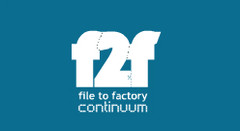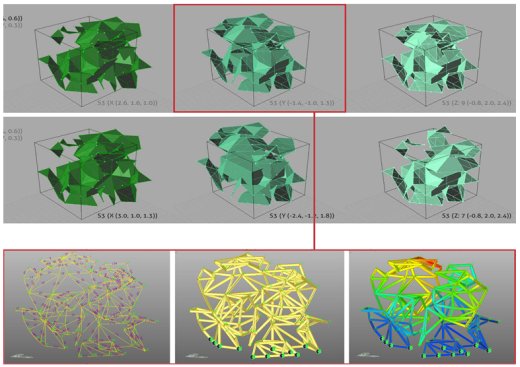-
-

- architectural design and manufactoring: from the school lab to the fabrication workshop
-
- ERASMUS
- ERASMUS
- Year
- 2007-2010
- Coordinator
- Dr. H.H. Bier
- Team
- K. Oosterhuis, H. Bier, C. Friedrich, and S. Korebrits
-
-
Hyperbody was involved 2007-10 in two EU-projects: E-Archidoct and F2F Continuum.
Continuum is a LL Erasmus Multilateral Project that aims at putting together schools of architecture and small to medium sized enterprises to exchange research results, information, ideas, techniques, methods and expertise in the domain of design-to-manufacturing. A large number of contemporary buildings is generated through parametric design, that is the design of forms with the irreplaceable aid of computer softwares in a continuum to their manufacturing. At the same time technological advances in the genesis of new materials and methods for the fabrication of components creates a natural continuum from the design process of a building to its fabrication.
Despite this evident continuum, in real terms work that is produced as the result of continuous efforts of research at universities and the respective research produced in the building industry is hardly communicated and rarely becomes common knowledge. The two parties involved, universities and enterprises are not in the necessary close contact to promote creativity, innovation and competitiveness in the domain of the creation of contemporary architecture with the use of advanced technology at European level. However, these two parties are complementary in their strengths and weaknesses. Namely, universities possess dedicated researchers with profound academic interest to conduct research but lack the infrastructure to test their ideas, whilst enterprises have the aforementioned infrastructure but cannot exploit it as they lack profound academic research. Moreover, teachers of architectural design always aware of contemporary tendencies in architecture never convey these tendencies to the building industry that tries speculatively and tentatively to adjust and adapt to these needs. Continuum will develop a series of activities such as student workshops to visit small to medium sized enterprises that work with cutting edge CAM/CNC techniques to become familiar with their limitations and potentials.
E-archidoct was offered in collaboration with 14 European universities 2008-10 as an Internet-based postgraduate program. In addition to the Internet-based individual and collaborative exchange between students and teachers facilitated by the open-source Modular Object-Oriented Dynamic Learning Environment (Moodle) which was incorporated into the E-Archidoct website, Protospace software applications (fig. 1) were as well integrated.
- Fig. 1: Protospace software applications were integrated in the E-archidoct platform
Students were introduced to parametric software such as Virtools, Grasshopper and Generative Components employed in architectural and urban design projects. One project (fig. 2), for instance, applies parametric definition for the development of multiple designs. Parametric manipulation implied, among others, the use of the marching cubes algorithm, which constructs surfaces from numerical values; furthermore, programmatic considerations were parametrically defined with respect to function in relation to volume and orientation in 3D space, etc. CAD structural analysis employing MIDAS/Gen implied that data with respect to forces, moments and stresses was used in order to determine the placement and dimension of main and secondary structure, whereas final design was physically prototyped by means of CAM.

- Fig. 2. Liu's project showing multiple design and evaluation phases employing design and structural engineering software
As indicated in Bier's paper on Internet-supported Multi-user Virtual and Physical Prototypes for Architectural Academic Education and Research (2012) the classical concept of distance learning implemented when time and distance separate educators and students is increasingly replaced by Internet-supported systems that are employed to assist daily academic interaction even when researchers, educators and students are not separated by time or distance.
As technologies evolve and pervasive forms increasingly emerge, permeating all aspects of academic everyday life, concepts such as distance learning are gradually replaced by ubiquitous education and research implemented in sentient, interactive environments. The traditional divide between formal (physical) and informal (virtual) contexts of education and research is blurred. Technological as well as social, cultural, and institutional changes mean that learning, studying, and researching are possible across spatial and temporal barriers.
 Facebook/
Facebook/
 Twitter/
Twitter/
 RSS
RSS
